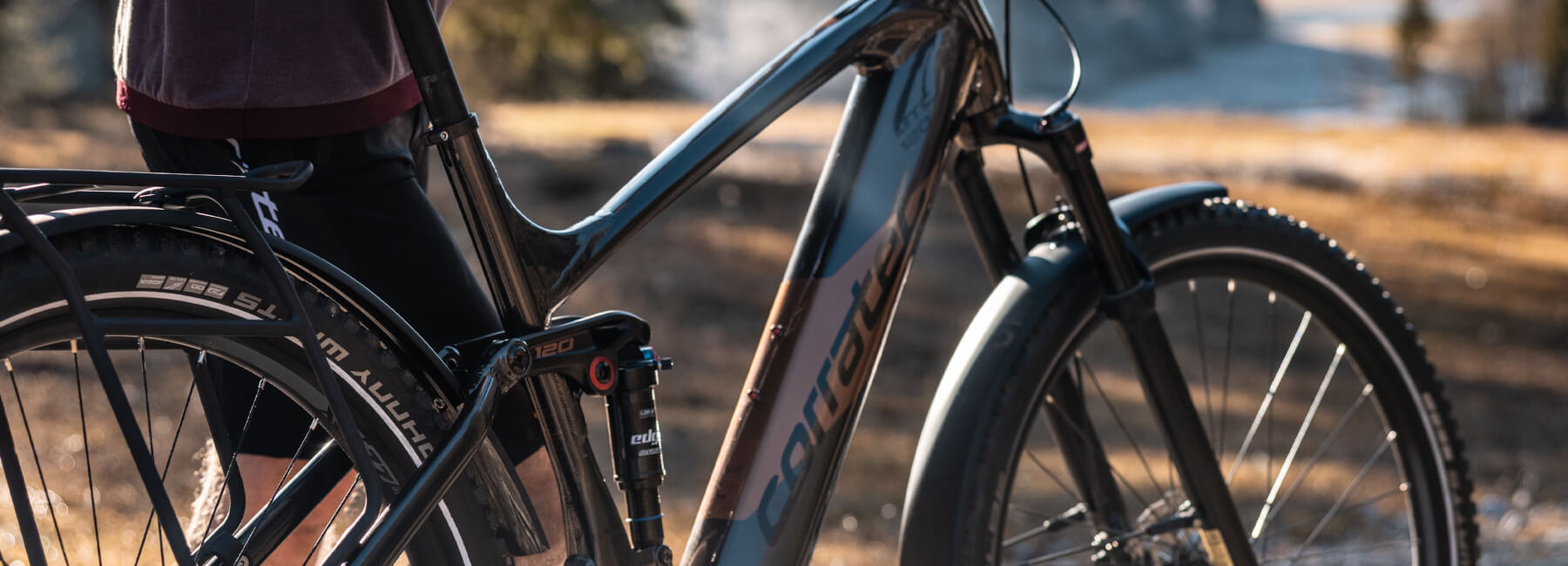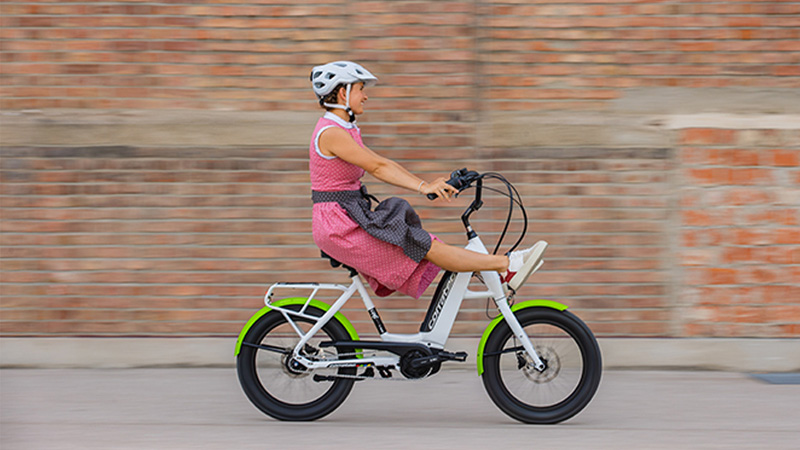Ten products you should consider buying with your electric bike

You’ve just purchased a shiny new steed and are ready to happily wheel it out of the showroom, but the bike shop’s salesperson has some recommendations. We explore ten products that are worth genuine consideration to both protect and improve your ride experience…
*Disclaimer: While we recommend investing in some of these accessories and services, any product recommendations mentioned are in no way affiliated with or tested by us other than in a personal capacity.
Insurance
There are very good odds that you have a number of high-value goods tacked on to your house insurance policy, such as watches, electronics or jewellery. It is of course possible to add bikes too, but most non-specialist insurance policies can come up lacking should the worst happen, so our first and foremost recommendation when you’re forking out for a high-value piece of kit like an e-bike is to consider specialist insurance that is designed for cyclists.
There are numerous specialists and while we are in no position to make recommendations of the policy that would suit you, some names you could research include Yellow Jersey, Cycleplan, Velolife, Laka and Bikmo. Each of these insurers is set up with specialist products that are tailored to bike owners, their kit and a fine level of detail that will cover you in various accident and theft scenarios.
Don’t be caught out by assuming a home insurance policy will cover all things e-bike.
GPS tracker
Bolstering your artillery against bike theft, there are now numerous devices on the market that can very subtly track and trace your e-bike and many will even come with some form of digital alert that lets you know your bike is being disturbed at the source.
Two examples of products on the market that serve both a tracking and owner alert functionality are the Knog Scout and Leopard Lync, both of which are easy to disguise and fit where you would typically place a bottle cage.
We should add that some higher-end electric bikes come with these systems pre-built into the bike, but nonetheless, this technology makes the list as it can be incredibly useful for the retrieval of a stolen bike. What’s more, if you’re not satisfied with this level of theft protection, check out BackPedal.co, a business that specialises in the retrieval of stolen bikes that are fitted with such trackers. In exchange for a £9 per month subscription this business will have trained professionals track down and retrieve your bike, all in accordance with the law, or give you your money back should it fail to recover your pride and joy.
High security bike lock
Most of the market’s security products are tested by an independent test house called Sold Secure, which determines the level of security each provides by assigning bronze, silver, gold and sometimes diamond ratings to signify the level of resistance each provides against thieves. The test house rates each lock based on the amount of time it takes its professionals to break, cut, lever, pick or pry open a piece of security equipment, so you can be sure there are no vulnerabilities when you see the logo present on the packaging.
Given that electric bikes don’t come too cheap, we recommend investing at least 5% to 10% of your e-bike’s value in security to protect it accordingly.
Once you have the lock or even better, multiple locks, there are tips and tricks to maximise your chances of hanging on to your whole bike. These include carefully choosing a locking position so that multiple components are contained – so for example your frame and back wheel with one lock and your fork and front rear with another. You can also buy a variety of other security gubbins to secure components from brands like Pinhead that supply special screws to replace your Allen bolts and axles with security products.
Pannier bags
Most modern electric bikes suited for commuting or touring will now come with a pannier rack fitted and so it’s time to get some bags to slot right on. Most off-the-shelf pannier bags should be instantly compatible, but ask your local bike shop if there’s any reason why your preferred bags will or won’t suit just to be sure. We recommend choosing pannier bags that have a high degree of waterproofing, including welded seams rather than stitching. This will ensure that your cargo remains dry should you get caught in the rain.
Waterproof jacket
As you’d wish for the contents of your bags to stay dry, it’s best you do too and for that, you’ll need a good waterproof coat to make sure you’re able to max out your ride potential. Now not all waterproof jackets are made equal and it’s the IP rating that will be the true tell of just how resistant to a deluge each garment will be. To be considered properly waterproof and not just water resistant you’ll be looking for a waterproofing rating of IP65, 66 or 67.
Now, waterproofing from the outside also means waterproofing from the inside, so it’s wise to consider how breathable a jacket is in the buying process so that you do not lock sweat underneath, something that will ultimately make you get cold. With this in mind, we recommend finding jackets that have some form of venting either under the arms or at the top of the back in order that some airflow makes its way through the garment while zipped up. Breathability ratings are measured and displayed on the label with a g/m² metric. The higher the g/m² figure the more breathable it is considered.
Ideally, you want to find something that has taped, rather than stitched seams and the same closure around the zips too. Add to that features like an extended visor to keep the rain out of your eyes and a dipped tail at the base of the jacket and you should have yourself a jacket that will keep the worst of the elements at bay. For added tailoring, look for adjustable cuffs and hoods that either have pull cords or Velcro.
A car rack rated to handle e-bikes
As with waterproof jackets, no two bike racks for your car are built the same and in fact, this is one of those areas where you really are likely to get what you pay for. Think about the consequences of cutting corners here; it could easily be a destroyed bike, or worse bike and car.
So, find something robust, ideally, a rack that purports to have been built with a high-weight carriage in mind because let’s face it e-bikes are a bit heavier than conventional pedal cycles. Consider then that you will be loading heavy bikes onto racks, so think about how easy that process looks with any given style of rack. A roof rack, for example, might be tricky for a heavier bike, so a tow ball mount is perhaps better suited if you are unsure about your strength or will be loading the bike alone. Look out for extras like mounting ramps, as well as how easy the fixtures are not only to lock down, but potentially lock. Some racking systems think of bike security, providing lockable clamps to give you the peace of mind that not only are bikes secure, but that you could stop for fuel without an opportunistic type lifting your cycle right off.
Of course, check that the electrics line up too; if your rack obscures the number plate or indicators then you may find it has a plug system to connect with your car’s electrics, as well as a place to mount a spare plate.
Bike cleaners and lubricants
As is the case with many of the goods featured here no two products will be the same and there’s plenty to learn here if you wish to deep dive, but if you’re unsure, or quite fairly don’t care too much for the details then have your bike shop advise you on which products are best for your e-bike.
As you might expect, the cleaning and lubrication sector has numerous lines that will contain chemicals, so it’s important to understand what you are applying and on what components in order that you don’t damage or accidentally contaminate components like your brakes. You’ll need those oil-free if you wish to stop.
Download Strava or Komoot
You’ll be pleased to learn that you can begin to take advantage of these great apps with no monetary commitment, which means you’ll be able to track your rides and discover local routes all with a quick dip into your apps. Of course, there are premium subscriptions where you can go down a rabbit hole of data, comparison and ride logging with friends, enter competitions and get granular with your data, helping you improve performance or challenge a local hero’s time up the largest of hills in the area.
Helmets
Wearing a helmet is a personal choice and many myths surround the safety that they offer. In Holland, where they build a safe cycle path for almost every new road then there is less likelihood of accidents and so the locals, you’ll tend to find, make up their own minds on the risk. That said, it can’t hurt, particularly if you are generally riding just that little bit faster and more so if you are heading off the road.
With that in mind, it’s really the style of helmet you desire and the intended use that will determine your purchase. Some modern urban helmets now come with the added technology elements of built-in lighting, or even an accident detection system. Others will contain anti-rotational injury devices built inside or into the shell; these quite simply absorb some of the rotation impacts should you come into contact with the floor, which surprisingly is how a lot of major injuries can occur.
If you are heading off the road and onto more unpredictable trails, then a helmet starts to become a must. If you are really tearing it down big mountain trails then a full-face helmet with a chin guard becomes a wise acquisition, whereas that might be overkill if you are taking gentle canal path jaunts at lower speeds.
When you do select a helmet one thing to be certain of is that you have the fit right, so try to measure the circumference of your head with a tape measure either at home or in the bike shop before trying a few on for size. A good fit will ensure that the helmet remains where it should in the worst case that you do take a fall. A final thing to consider is breathability, so look carefully at the venting structure of the helmet to be sure that enough airflow passes through and ideally that there’s a bug net preventing insects from ending up in your hair.
A quality hand pump
Finally, it pays to be prepared just in case you do encounter a puncture. Many modern bikes are now coming tubeless, so sealant inside the tyre will automatically repair any breaches where air could escape, but if your bike is still carrying tubes then make sure you have a spare with you at all times, or at the very least know how far away you are from an open local bike shop.
Hand pumps come in a variety of barrel sizes and so it’s best to mix and match the volume achievable from the pump with what is required by your tyre. For context, mountain bike tyres will run softer to maximise grip and absorption on the trail, while road tyres require a higher PSI in order to reduce rolling resistance and maximise speed.
If you are mountain biking or gravel riding you may wish to add foam tyre inserts, which are a relatively new invention now common in bike shops, but one that is a wise investment to prevent the difficult-to-fix ‘pinch’ puncture.

